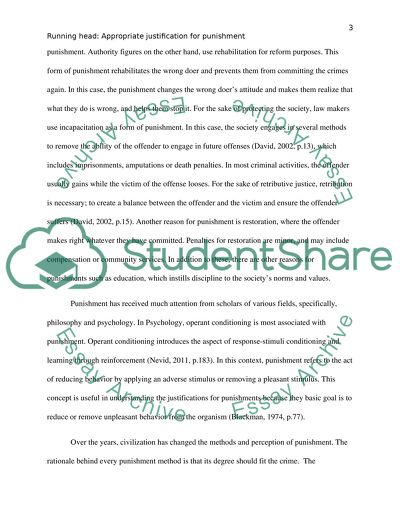Cite this document
(“Appropriate Justification for Punishment Essay Example | Topics and Well Written Essays - 2000 words”, n.d.)
Appropriate Justification for Punishment Essay Example | Topics and Well Written Essays - 2000 words. Retrieved from https://studentshare.org/law/1434646-what-is-the-most-appropriate-justification-for
Appropriate Justification for Punishment Essay Example | Topics and Well Written Essays - 2000 words. Retrieved from https://studentshare.org/law/1434646-what-is-the-most-appropriate-justification-for
(Appropriate Justification for Punishment Essay Example | Topics and Well Written Essays - 2000 Words)
Appropriate Justification for Punishment Essay Example | Topics and Well Written Essays - 2000 Words. https://studentshare.org/law/1434646-what-is-the-most-appropriate-justification-for.
Appropriate Justification for Punishment Essay Example | Topics and Well Written Essays - 2000 Words. https://studentshare.org/law/1434646-what-is-the-most-appropriate-justification-for.
“Appropriate Justification for Punishment Essay Example | Topics and Well Written Essays - 2000 Words”, n.d. https://studentshare.org/law/1434646-what-is-the-most-appropriate-justification-for.


